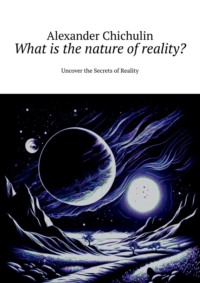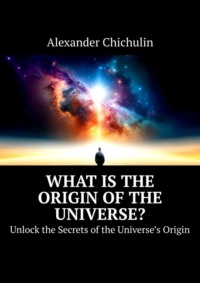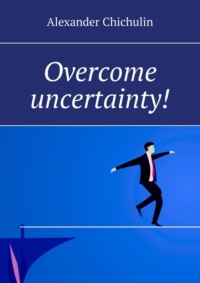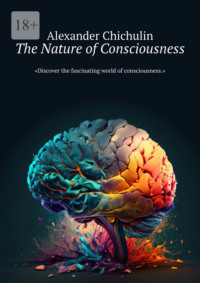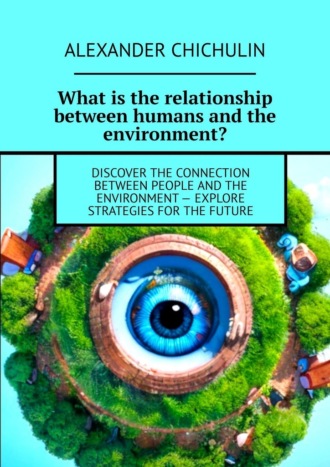
Полная версия
What is the relationship between humans and the environment? Discover the connection between people and the environment – explore strategies for the future

What is the relationship between humans and the environment?
Discover the connection between people and the environment – explore strategies for the future
Alexander Chichulin
© Alexander Chichulin, 2023
ISBN 978-5-0059-9967-2
Created with Ridero smart publishing system
1. Introduction
Humans have been interacting with the environment since the dawn of civilization. Over time, these interactions have become increasingly complex, as technological advancements and population growth have enabled humans to modify and exploit the natural world in unprecedented ways. Today, the relationship between humans and the environment is a critical issue that affects not only the natural world but also human well-being and survival.
This book explores the relationship between humans and the environment, drawing on insights from ecology, social sciences, and philosophy. We aim to provide a comprehensive and nuanced understanding of how humans interact with the environment and how these interactions shape our lives and the planet.
We begin by defining what we mean by the environment and discussing the ecological principles that underpin our understanding of it. We then explore the ways in which human activities have impacted the environment, from deforestation and pollution to climate change and species extinction.
We also examine the cultural and psychological factors that shape human perceptions of the environment, as well as the different contexts in which human-environment interactions occur, such as in urban areas, agriculture, and resource extraction.
Throughout the book, we consider the ethical and moral dimensions of human-environment relationships, including questions of justice and equity. Finally, we look to the future, exploring the potential impact of emerging technologies and the challenges posed by climate change.
Our goal in writing this book is to provide a comprehensive understanding of the relationship between humans and the environment and to offer insights and recommendations for policymakers, researchers, and concerned citizens.
– Purpose and scope of the book
The purpose of this book is to provide a comprehensive and accessible overview of the relationship between humans and the environment. Our aim is to explore the many ways in which humans interact with the environment, both positively and negatively, and to provide insights into the complex and often challenging issues that arise from these interactions.
To achieve this goal, we draw on a range of disciplines, including ecology, social sciences, and philosophy. Our approach is interdisciplinary, recognizing that the relationship between humans and the environment is complex and multifaceted, and requires a broad range of perspectives to fully understand.
The scope of the book is broad, covering a range of topics related to human-environment interactions. We begin by defining what we mean by the environment and exploring the ecological principles that underpin our understanding of it. We then examine the ways in which human activities have impacted the environment, from pollution and resource depletion to climate change and biodiversity loss.
We also explore the cultural and psychological factors that shape human perceptions of the environment, as well as the different contexts in which human-environment interactions occur, such as in urban areas, agriculture, and resource extraction.
Throughout the book, we consider the ethical and moral dimensions of human-environment relationships, including questions of justice and equity. Finally, we look to the future, exploring the potential impact of emerging technologies and the challenges posed by climate change.
Our hope is that this book will provide a valuable resource for policymakers, researchers, and concerned citizens who are seeking to understand and address the complex and pressing issues related to human-environment interactions.
– Brief history of human-environment interaction
Humans have been interacting with the environment for thousands of years. In the earliest stages of human history, humans were primarily hunter-gatherers, relying on natural resources for survival. As humans developed agriculture, they began to transform the natural environment to meet their needs. This led to the domestication of plants and animals and the development of settled societies.
Over time, humans developed increasingly sophisticated technologies, allowing them to extract resources from the environment on a larger scale. This led to the development of mining, forestry, and other extractive industries, which had significant impacts on the environment.
As human populations grew, the demand for resources also grew, leading to increased deforestation, soil degradation, and water pollution. The industrial revolution in the 18th and 19th centuries accelerated these trends, with the development of new technologies that allowed for large-scale resource extraction and manufacturing.
In the 20th century, concerns about environmental degradation and pollution began to emerge. The publication of Rachel Carson’s “Silent Spring” in 1962 helped to launch the modern environmental movement, raising awareness about the impacts of human activities on the natural world.
Since then, there have been numerous efforts to address environmental issues, including the establishment of environmental regulations, the development of sustainable technologies, and the promotion of conservation and preservation efforts. Despite these efforts, however, the relationship between humans and the environment remains complex and challenging, with many pressing issues, including climate change, biodiversity loss, and resource depletion, still unresolved.
In the pages that follow, we will explore these issues in more detail, drawing on insights from a range of disciplines to provide a comprehensive understanding of the relationship between humans and the environment.
2. Understanding the Environment
To understand the relationship between humans and the environment, it is first necessary to define what we mean by the environment. Broadly speaking, the environment can be defined as the natural world and the systems that support life on Earth, including the atmosphere, oceans, and land.
Ecology is the branch of science that studies the environment and the interactions between living organisms and their surroundings. Ecologists study the complex web of relationships between species, as well as the biotic and abiotic factors that influence those relationships.
One of the key concepts in ecology is the ecosystem, which can be defined as a community of living organisms and the physical and chemical environment in which they interact. Ecosystems are composed of both biotic (living) and abiotic (non-living) components, and they are shaped by a range of factors, including climate, geology, and human activities.
Understanding the environment also requires an understanding of the many ecological principles that govern the natural world. These principles include the laws of thermodynamics, the cycles of matter and energy, and the importance of biodiversity for ecosystem function.
In addition to understanding the scientific principles that underpin our understanding of the environment, it is also important to recognize the cultural and societal factors that shape human perceptions of the environment. Humans have developed a range of cultural beliefs, values, and practices that reflect their relationship with the natural world, including religious and spiritual beliefs, traditional ecological knowledge, and conservation ethics.
In the pages that follow, we will explore these topics in more detail, drawing on insights from ecology, social sciences, and philosophy to provide a comprehensive understanding of the relationship between humans and the environment.
– Definition and components of the environment
The environment can be broadly defined as the natural world and the systems that support life on Earth. It includes the air we breathe, the water we drink, the land we live on, and the complex web of relationships between living organisms and their surroundings.
To understand the environment, it is useful to break it down into its component parts. One way to do this is to use the concept of ecosystems. Ecosystems can be defined as communities of living organisms and the physical and chemical environment in which they interact. They can range in size from a small pond to an entire biome, such as a tropical rainforest or a desert.
Ecosystems are composed of both biotic (living) and abiotic (non-living) components. The biotic components include the living organisms that make up the ecosystem, including plants, animals, and microorganisms. The abiotic components include the physical and chemical elements that shape the environment, including soil, water, air, sunlight, and climate.
The interactions between these biotic and abiotic components are complex and interconnected. For example, plants rely on soil nutrients and sunlight to grow, while animals depend on plants and other animals for food and shelter. Changes in one component of an ecosystem can have far-reaching effects on the rest of the system.
In addition to these natural components, the environment also includes the built environment, which refers to the human-made structures and systems that shape the places where we live, work, and play. This can include buildings, roads, bridges, and other infrastructure, as well as systems for transportation, energy production, and waste management.
In the pages that follow, we will explore the different components of the environment in more detail, drawing on insights from ecology, geology, and other fields to provide a comprehensive understanding of the relationship between humans and the environment.
– Ecological principles and systems thinking
To understand the relationship between humans and the environment, it is important to have a basic understanding of ecological principles and systems thinking. Ecological principles are the scientific concepts and laws that govern the relationships between living organisms and their environment. Systems thinking, on the other hand, is a way of understanding the world that recognizes the interconnectedness and complexity of natural systems.
One of the key ecological principles is the idea of interdependence. All living organisms are connected to each other and to their environment in complex ways. This means that changes to one part of the ecosystem can have far-reaching effects on the rest of the system. For example, the loss of a particular species can disrupt the entire food web, affecting the abundance and distribution of other species.
Another important ecological principle is the concept of energy flow and nutrient cycling. Ecosystems are powered by sunlight and the energy flows through the system as organisms consume and are consumed by other organisms. Nutrients, such as carbon, nitrogen, and phosphorus, are also cycled through the ecosystem as they are taken up by living organisms, recycled through decomposition, and eventually returned to the environment.
Systems thinking is a way of understanding the world that recognizes the complexity and interconnectedness of natural systems. Rather than viewing the environment as a collection of separate parts, systems thinking encourages us to see it as a series of interconnected processes and relationships. This approach allows us to better understand the causes and consequences of environmental problems and to develop more effective solutions.
Systems thinking also emphasizes the importance of feedback loops in natural systems. Feedback loops occur when changes in one part of the system cause changes in other parts of the system, which in turn can feedback and affect the original change. Positive feedback loops amplify changes, while negative feedback loops help to stabilize the system. Understanding feedback loops is important for understanding the potential consequences of human actions on the environment.
In the pages that follow, we will explore these ecological principles and systems thinking in more detail, drawing on insights from ecology, systems science, and other fields to provide a comprehensive understanding of the relationship between humans and the environment.
Конец ознакомительного фрагмента.
Текст предоставлен ООО «ЛитРес».
Прочитайте эту книгу целиком, купив полную легальную версию на ЛитРес.
Безопасно оплатить книгу можно банковской картой Visa, MasterCard, Maestro, со счета мобильного телефона, с платежного терминала, в салоне МТС или Связной, через PayPal, WebMoney, Яндекс.Деньги, QIWI Кошелек, бонусными картами или другим удобным Вам способом.




